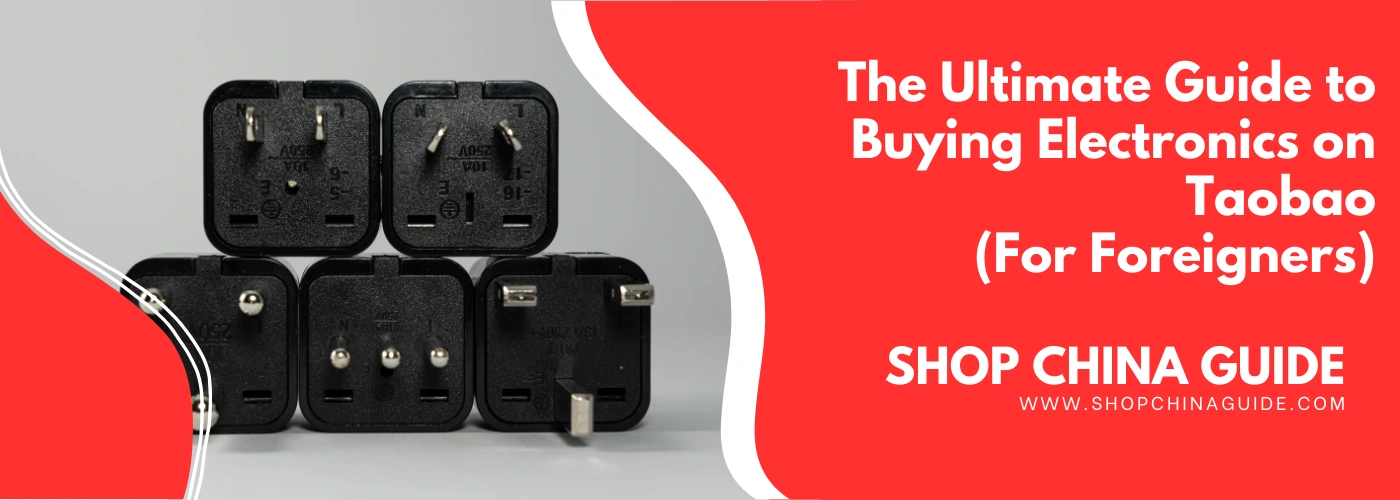China is known as the world’s factory, where more than half of the world’s goods, including Apple phones and other electronic products, are manufactured. After decades of development, China’s manufacturing industry has matured significantly. Coupled with the country’s low labor costs, finding high-quality, cost-effective products in China has become a consensus among most international buyers.
Especially for electronic products, the city of Shenzhen in China can be considered the largest electronic market in the world. Huaqiangbei Market, in particular, is like a treasure trove. Anything you can think of, or can’t think of, is available for sale there. However, as foreigners purchasing electronic products on Taobao or other Chinese e-commerce platforms, there are many considerations to keep in mind. For instance, China’s plug standards, voltage specifications significantly differ from international standards. So, what should we, as foreigners, pay attention to when buying Chinese-made electronic products?
Global Power Plug and Socket Types
Across the globe, different countries commonly use various types of electrical plugs and sockets, making it crucial for overseas buyers purchasing Chinese-made electronic products on platforms like Taobao to be well-informed about specific details to ensure safety and device compatibility.
What are the types of global power plugs and sockets?
The International Electrotechnical Commission (IEC) categorizes plugs and sockets from Type A to Type N. These types vary in pin shape, size, configuration, and the voltage and frequency they support.
Type A and B (North American Standard)
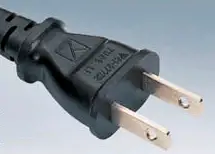
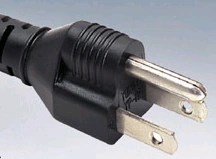
- Characteristics: Type A features two flat parallel pins, while Type B adds a round grounding pin.
- Regions Used: United States, Canada, Mexico, Japan, and other parts of Central and South America.
Type C (Europlug)
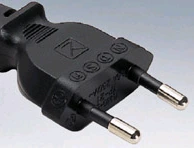
- Characteristics: Two round pins.
- Regions Used: Europe, Asia, South America, and some African countries.
Type D and M (Old British Standard)
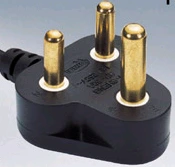
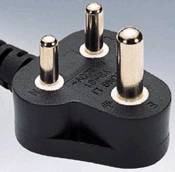
- Characteristics: Three large round pins arranged in a triangular pattern. Type M is similar to D but with larger pins.
- Regions Used: India (Type D), Sri Lanka, Nepal, South Africa (Type M), and other countries.
Type E and F (European Standard)
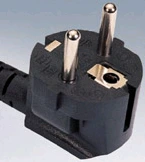
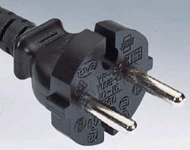
- Characteristics: Type E has two round pins and a hole for the socket’s male earthing pin, whereas Type F (Schuko) has two round pins with side grounding contacts.
- Regions Used: France, Germany, Belgium, Poland, Russia, and other European countries.
Type G (British Standard)
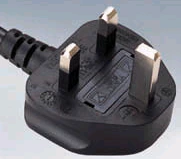
- Characteristics: Three rectangular pins arranged in a triangular pattern.
- Regions Used: United Kingdom, Ireland, Malta, Malaysia, Hong Kong, and Singapore.
Type H (Israeli Standard)
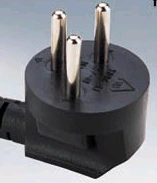
- Characteristics: Two parallel V-shaped pins and a grounding pin.
- Regions Used: Israel, the West Bank, and the Gaza Strip.
Type I (Australian Standard)
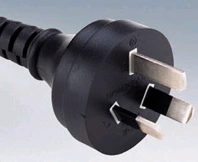
- Characteristics: Two V-shaped flat pins for live and neutral, with or without a grounding pin.
- Regions Used: Australia, New Zealand, some regions in China, and Argentina.
Type J (Swiss Standard)
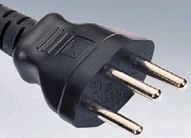
- Characteristics: Three round pins.
- Regions Used: Switzerland and Liechtenstein.
Type K (Danish Standard)
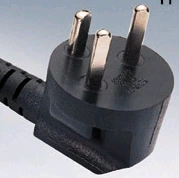
- Characteristics: Two round pins with a grounding pin above them.
- Regions Used: Denmark and Greenland.
Type L (Italian Standard)
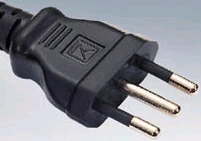
- Characteristics: A row of three round pins. There are versions with larger and smaller pins.
- Regions Used: Italy and some North African countries.
Type N (Brazilian Standard)
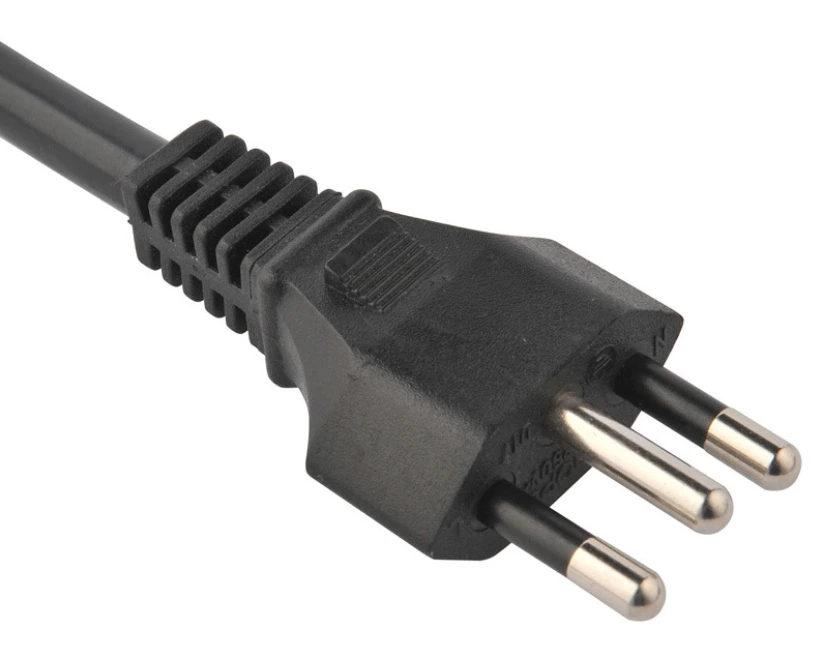
- Characteristics: Two round pins and a grounding pin, similar to Type C but with a notch.
- Regions Used: Brazil.
Global Voltage and Frequency Types
In addition to the fact that each country has different standards for plugs and sockets, another important consideration is voltage and frequency. This is also an issue you need to consider when purchasing Chinese-made electronic products on Taobao.
Americas
- North America (such as the USA, Canada): Typically uses 110V to 120V, with a frequency of 60Hz.
- Central and South America (such as Mexico, Brazil, Argentina): Voltage ranges from 110V to 220V, with most countries having a frequency of 60Hz, though there are exceptions.
Europe
- Most European countries use a standard voltage of 230V, with a frequency of 50Hz. This includes Germany, France, Italy, Spain, etc.
Asia
- East Asia (such as Japan, South Korea): Japan is 100V, with the eastern region including Tokyo at 50Hz and the western region including Osaka at 60Hz; South Korea uses 220V, with a frequency of 60Hz.
- South Asia (such as India): Typically uses 230V, with a frequency of 50Hz.
- Southeast Asia (such as Thailand, Malaysia, Singapore): Voltage and frequency standards vary, but most countries use 220V to 240V, with a frequency of 50Hz.
Africa
- African countries have a wide variation in voltage and frequency, but many use 220V to 230V, usually with a frequency of 50Hz. For example, South Africa uses 230V, with a frequency of 50Hz.
Oceania
- Australia and New Zealand: Both countries use a standard voltage of 230V, with a frequency of 50Hz.
Middle East
- The Middle East typically has voltages ranging from 220V to 240V, with frequencies of either 50Hz or 60Hz, depending on the country. For example, Saudi Arabia and the UAE use 230V, with a frequency of 50Hz.
Electrical Standards of Countries Worldwide
To provide a clearer and more intuitive understanding of the voltage, frequency, and outlet types across different countries, we have compiled relevant parameters for some representative countries. We hope this information will be helpful to you.
Electrical Standards in Asian Countries
| Country/Region | Voltage | Frequency | Plug Type |
|---|---|---|---|
| Hong Kong | 220V | 50Hz | G |
| Taiwan | 110V | 60Hz | A, B |
| Macau | 220V | 50Hz | F, M |
| Japan | 100V | 50/60Hz | A, B |
| South Korea | 220V | 60Hz | C, F |
| India | 230V | 50Hz | C, D, M |
| Thailand | 230V | 50Hz | A, B, C, O |
| Malaysia | 240V | 50Hz | G |
| Singapore | 230V | 50Hz | G |
| Philippines | 220V | 60Hz | A, B, C |
| Vietnam | 220V | 50Hz | A, C, F |
| Indonesia | 230V | 50Hz | C, F |
| Sri Lanka | 230V | 50Hz | D, M |
| Myanmar | 230V | 50Hz | C, D, F, G |
| Nepal | 230V | 50Hz | C, D, M |
| Pakistan | 230V | 50Hz | C, D |
| Bangladesh | 220V | 50Hz | A, C, D, G, K |
| Afghanistan | 220V | 50Hz | C, F |
| Armenia | 230V | 50Hz | C, F |
| Azerbaijan | 220V | 50Hz | C, F |
| Bahrain | 230V | 50Hz | G |
| Cyprus | 230V | 50Hz | G |
| Georgia | 220V | 50Hz | C, F |
| Iran | 230V | 50Hz | C, F |
| Iraq | 230V | 50Hz | C, D, G |
| Israel | 230V | 50Hz | C, H |
| Jordan | 230V | 50Hz | B, C, D, F, G, J |
| Kuwait | 240V | 50Hz | G |
| Lebanon | 220V | 50Hz | A, B, C, D, G |
| Oman | 240V | 50Hz | G |
| Saudi Arabia | 230V | 60Hz | G |
Electrical Standards in European Countries
| Country | Voltage | Frequency | Plug Type |
|---|---|---|---|
| Austria | 230V | 50Hz | C, F |
| Belgium | 230V | 50Hz | C, E |
| Bulgaria | 230V | 50Hz | C, F |
| Croatia | 230V | 50Hz | C, F |
| Cyprus | 230V | 50Hz | G |
| Czech Republic | 230V | 50Hz | C, E |
| Denmark | 230V | 50Hz | C, F, K |
| Estonia | 230V | 50Hz | C, F |
| Finland | 230V | 50Hz | C, F |
| France | 230V | 50Hz | C, E |
| Germany | 230V | 50Hz | C, F |
| Greece | 230V | 50Hz | C, F |
| Hungary | 230V | 50Hz | C, F |
| Iceland | 230V | 50Hz | C, F |
| Ireland | 230V | 50Hz | G |
| Italy | 230V | 50Hz | C, F, L |
| Latvia | 230V | 50Hz | C, F |
| Lithuania | 230V | 50Hz | C, F |
| Luxembourg | 230V | 50Hz | C, F |
| Malta | 230V | 50Hz | G |
| Netherlands | 230V | 50Hz | C, F |
| Norway | 230V | 50Hz | C, F |
| Poland | 230V | 50Hz | C, E |
| Portugal | 230V | 50Hz | C, F |
| Romania | 230V | 50Hz | C, F |
| Slovakia | 230V | 50Hz | C, E |
| Slovenia | 230V | 50Hz | C, F |
| Spain | 230V | 50Hz | C, F |
| Sweden | 230V | 50Hz | C, F |
| United Kingdom | 230V | 50Hz | G |
Electrical Standards in American Countries
| Country | Voltage | Frequency | Plug Type |
|---|---|---|---|
| United States | 120V | 60Hz | A, B |
| Canada | 120V | 60Hz | A, B |
| Mexico | 127V | 60Hz | A, B |
| Brazil | 127/220V | 60Hz | N |
| Argentina | 220V | 50Hz | I |
| Chile | 220V | 50Hz | C, L |
| Colombia | 110V | 60Hz | A, B |
| Venezuela | 120V | 60Hz | A, B |
| Peru | 220V | 60Hz | A, C |
| Uruguay | 230V | 50Hz | F, L |
| Ecuador | 120V | 60Hz | A, B |
| Bolivia | 230V | 50Hz | A, C |
| Paraguay | 220V | 50Hz | C |
| Guyana | 240V | 60Hz | A, B, D, G |
| Suriname | 127/230V | 60Hz | C, F |
| Belize | 110/220V | 60Hz | A, B, G |
| Guatemala | 120V | 60Hz | A, B |
| Honduras | 120V | 60Hz | A, B |
| El Salvador | 115V | 60Hz | A, B |
| Nicaragua | 120V | 60Hz | A, B |
| Costa Rica | 120V | 60Hz | A, B |
| Panama | 120V | 60Hz | A, B |
| Cuba | 110/220V | 60Hz | A, B, C, L |
| Dominican Republic | 120V | 60Hz | A, B |
| Haiti | 110V | 60Hz | A, B |
| Jamaica | 110V | 50Hz | A, B |
| Trinidad and Tobago | 115V | 60Hz | A, B |
| Barbados | 115V | 50Hz | A, B |
| Bahamas | 120V | 60Hz | A, B |
| Saint Lucia | 230V | 50Hz | G |
Electrical Standards in African Countries
| Country | Voltage | Frequency | Plug Type |
|---|---|---|---|
| Algeria | 230V | 50Hz | C, F |
| Angola | 220V | 50Hz | C |
| Benin | 220V | 50Hz | C, E |
| Botswana | 230V | 50Hz | D, G, M |
| Burkina Faso | 220V | 50Hz | C, E |
| Cameroon | 220V | 50Hz | C, E |
| Cape Verde | 230V | 50Hz | C, F |
| Chad | 230V | 50Hz | D, E, F |
| Congo | 230V | 50Hz | C, E |
| Côte d’Ivoire | 230V | 50Hz | C, E |
| Djibouti | 220V | 50Hz | C, E |
| Egypt | 220V | 50Hz | C, F |
| Ethiopia | 220V | 50Hz | C, F, L |
| Gabon | 220V | 50Hz | C |
| Gambia | 230V | 50Hz | G |
| Ghana | 230V | 50Hz | D, G |
| Guinea | 220V | 50Hz | C, F, K |
| Kenya | 240V | 50Hz | G |
| Lesotho | 220V | 50Hz | M |
| Liberia | 120/220V | 50/60Hz | A, B, C, E, F |
| Libya | 127/230V | 50Hz | D, L |
| Madagascar | 220V | 50Hz | C, E, J, K |
| Malawi | 230V | 50Hz | G |
| Mali | 220V | 50Hz | C, E |
| Mauritania | 220V | 50Hz | C |
| Mauritius | 230V | 50Hz | C, G |
| Morocco | 220V | 50Hz | C, E |
| Mozambique | 220V | 50Hz | C, F, M |
| Namibia | 220V | 50Hz | D, M |
| Nigeria | 230V | 50Hz | D, G |
Electrical Standards in Oceania Countries
| Country/Region | Voltage | Frequency | Plug Type |
|---|---|---|---|
| Australia | 230V | 50Hz | I |
| New Zealand | 230V | 50Hz | I |
| Fiji | 240V | 50Hz | I |
| Papua New Guinea | 240V | 50Hz | I |
| Solomon Islands | 230V | 50Hz | I, G |
| Vanuatu | 230V | 50Hz | I, G |
| Samoa | 230V | 50Hz | I |
| Tonga | 240V | 50Hz | I |
| Tuvalu | 220V | 50Hz | I |
| Kiribati | 240V | 50Hz | I |
| Nauru | 240V | 50Hz | I |
| Palau | 120V | 60Hz | A, B |
| Marshall Islands | 120V | 60Hz | A, B |
| Micronesia | 120V | 60Hz | A, B |
| American Samoa | 120V | 60Hz | A, B, F, I |
Standards and Types of Chinese Electronic Products
Next, let’s see why it’s crucial for overseas users to consider China’s specific electrical standards when purchasing electronic products on Taobao. This ensures their electronic devices are compatible and can be safely used when buying Chinese-made electronics for use abroad.
National Safety Standards for Chinese Electronic Products
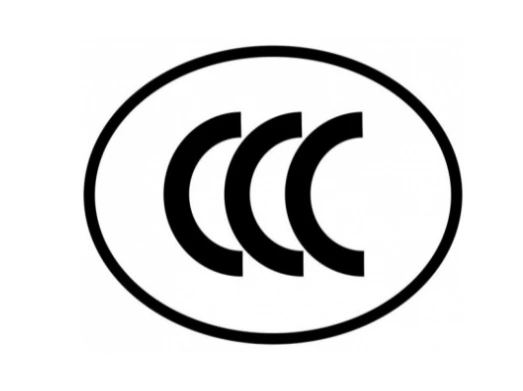
Chinese-made electronic products comply with national safety standards through the China Compulsory Certificate (CCC), a safety and quality certification system required for a wide range of products before they can be marketed, imported, or used for commercial purposes in China. This certification is managed by the Chinese government and is essential for both domestic and imported goods in certain product categories.
To obtain CCC certification, products must undergo testing and inspection by certification bodies designated by China. Once a product is deemed compliant, it is issued a CCC certificate and the CCC mark can be affixed to the product or its packaging. The aim of CCC certification is to protect consumer safety and national security, ensure product quality, and enforce market regulations.
China Electrical Plug Types
China primarily uses two types of electrical plugs: Type A and Type I. However, Type C plugs can also be found in some regions, reflecting a mix of domestic and international standards due to globalization and the diverse origins of electronic products within China.
Type A Plugs

Type A plugs feature two parallel flat pins. They are the same as those used in North America and Japan. However, devices designed for the 120V standard in these regions may require a voltage converter to safely operate on China’s standard 220V power supply.
Type I Plugs

Type I plugs, characterized by a V-shaped configuration of two flat pins and a grounding pin, are more commonly associated with Australia but are also a standard in China. This three-prong plug is designed for China’s standard 220V, 50Hz electrical supply.
Type C Plugs

Although less common, Type C plugs, also known as Europlugs, with two round pins, can be found in some areas of China, especially in hotels catering to international travelers or in appliances imported from Europe.
China Power Supply Voltage and Frequency
When considering the purchase of Chinese-made electronic products, one important factor that cannot be overlooked is the difference in voltage and power frequency. The standard voltage in China is 220V with a frequency of 50Hz. Globally, this standard is not uniform. For example, the standard voltage in the United States and Canada is 120V with a frequency of 60Hz, while most European countries use the same voltage and frequency as China, 220V/50Hz. This difference means that using electronics designed for the Chinese market in other countries could lead to them not working or even damaging the devices. More seriously, it could cause safety accidents.
China Voltage 3 Phase
In China, the primary standard voltage for three-phase power supply systems is 380V, with a frequency of 50Hz. This high voltage is primarily used in industrial and commercial settings, rather than in ordinary households. Three-phase power supply is very common in industrial environments due to its efficient energy distribution and stability, making it suitable for devices and machinery that require higher power.
For personal electrical appliances, the vast majority of household appliances such as televisions, refrigerators, and washing machines use single-phase power, typically at a voltage of 220V. The use of three-phase 380V voltage is generally not applicable to personal appliances but is intended for those devices requiring higher power, such as large industrial machinery, commercial air conditioning systems, elevators, and some large commercial kitchen equipment.
Therefore, for international buyers shopping on Taobao, exposure to China’s three-phase power supply is rare. Of course, for commercial buyers, there might be involvement with China’s three-phase power supply.
How to use Chinese-made electronic products abroad?
Using a Plug Adapter
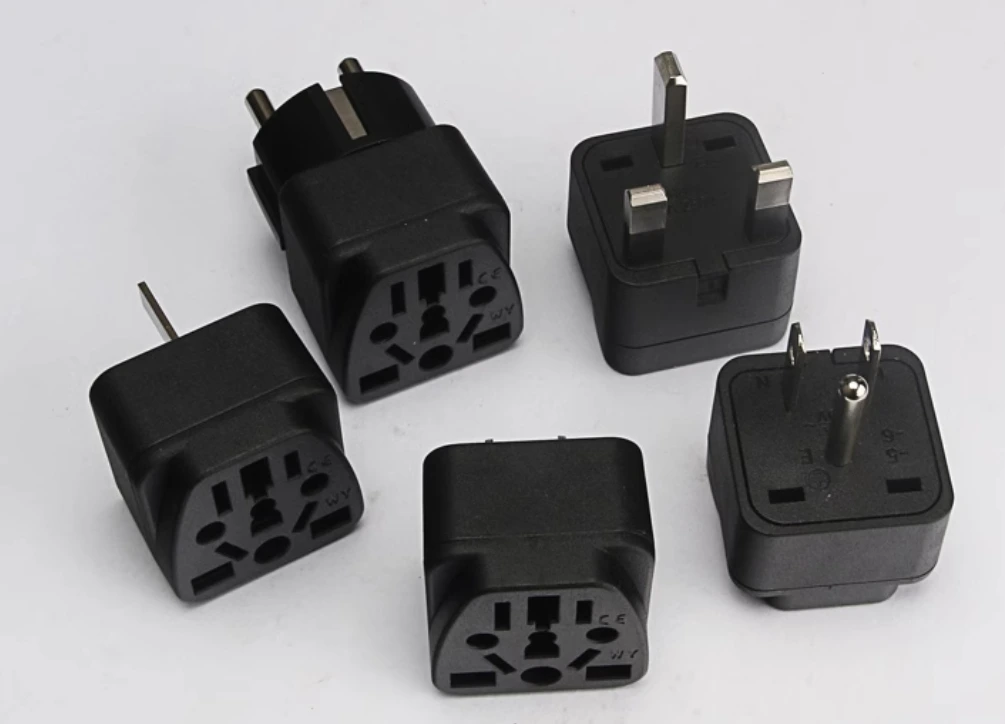
When international buyers purchase Chinese-made electronic products on Taobao, an important consideration is the difference in plug standards. Chinese electronic plugs are typically of Type A, C, and I, which are not universally compatible in many other countries. For instance, the United States and Canada mainly use Type A and B plugs, while most European countries adopt Type C, E, and F plugs. This means that without the appropriate plug adapter, these electronic products bought from China will not fit into the outlets in these countries.
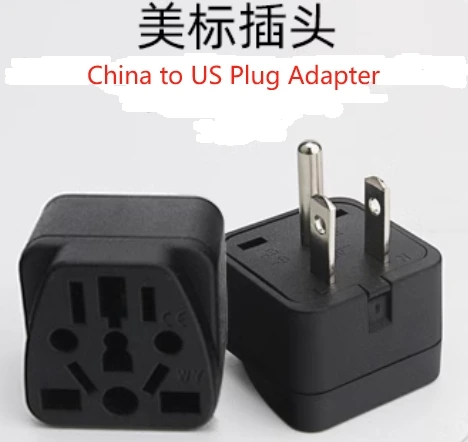
The role of plug adapters is to convert one type of plug into another to fit the socket standards of the destination country. On Taobao, you can even find universal plug adapters, which are compactly designed and easy to carry, making them an ideal choice for international travelers and consumers purchasing electronics for international use. However, it’s important to note that plug adapters do not change the electrical input voltage. If the voltage of the electronic product does not match the voltage of the destination country, a voltage converter will also be needed in addition to a plug adapter.
Using a Voltage Converter
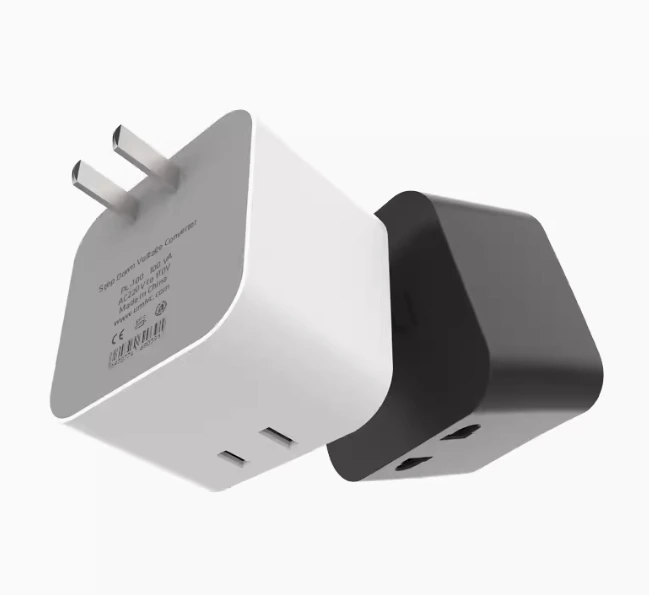
To safely use Chinese-made electronic products in countries with different voltage standards, a common and practical solution is the use of a voltage converter. Voltage converters can alter the power supply’s voltage to match the voltage required by your device, ensuring that the device operates without any issues. When choosing a voltage converter, it’s crucial to ensure that its maximum output power meets the needs of your device to prevent damage due to insufficient power. Voltage converters are also available on Taobao; you can search for “电压转换器” (voltage converter) on Taobao to find one.
Checking if Electronic Products Support Dual Voltage
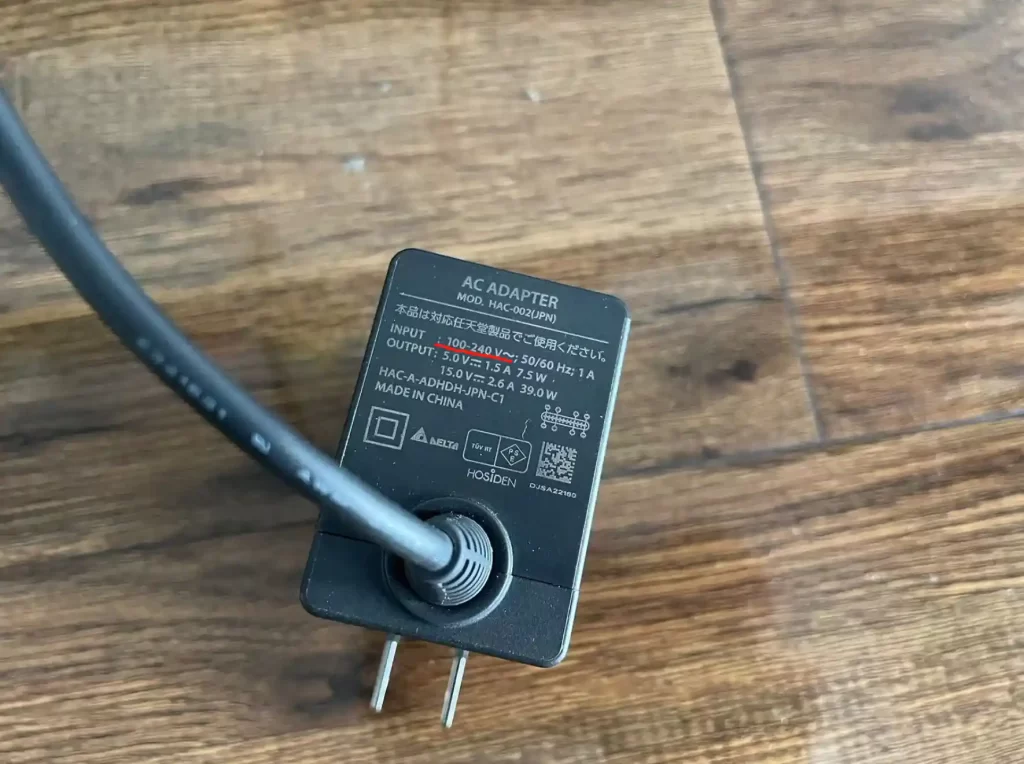
Additionally, understanding whether your device supports dual voltage (i.e., can automatically switch between 100-240V) is also crucial. Many modern electronic devices, especially portable electronics like laptops, mobile phone chargers, etc., are designed with dual voltage capability, meaning they can be safely used in most countries around the world without the need for an additional voltage converter. You can verify whether your device supports dual voltage by checking the label on the back of the device or on the power adapter.
Safety Tips
- Always check the voltage specifications of your electronic devices before using them with different electrical standards.
- Use high-quality plug adapters and voltage converters to avoid safety hazards.
- Pay attention to the load capacity of adapters and converters to prevent overheating or damage to your device.

